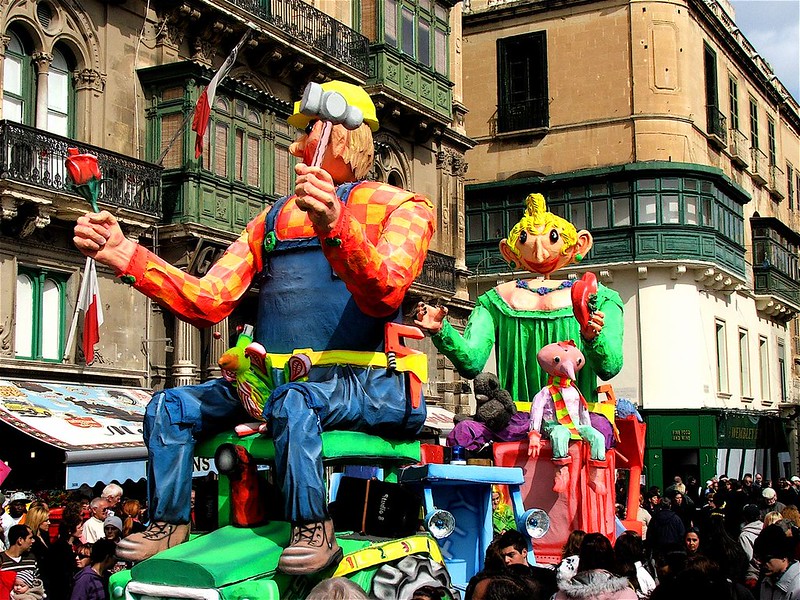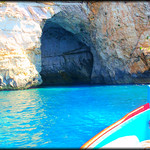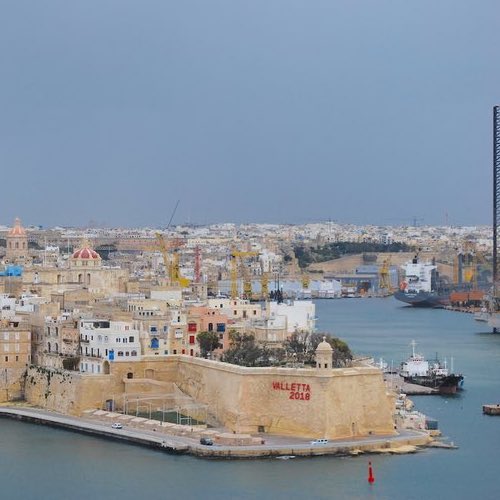Is Malta Worth Visiting?
categories: europe travel
author in Valetta, Malta
As a travel journalist, I have been fortunate enough to explore some of the most captivating destinations around the world. From bustling cities to tranquil retreats, each place has its unique charm and allure. However, few places have left a lasting impression on me like Malta. It may have some of the most beautiful cities I have seen and has an amazingly rich history.
In this article, I will delve into the question “Is Malta Worth Visiting?” and explore the various aspects that make this archipelago a must-visit for travelers. From its rocky coastline to its historic landmarks, Malta has something to offer everyone. Whether you’re seeking adventure, relaxation, or a cultural experience, Malta is sure to exceed your expectations. So pack your bags and prepare for an unforgettable journey to this enchanting destination.
Table of contents: ()
The Charm of Malta’s Historic Sites
Malta’s rich history is reflected in its numerous historic sites, each with its own unique story, architecture, and charm. From the awe-inspiring Megalithic Temples to the medieval town of Mdina, exploring Malta’s historic sites is like taking a trip back in time.

Ħaġar Qim
The Megalithic Temples, dating back to 3,600 BC, are among the oldest free-standing structures in the world and have earned a place on UNESCO’s World Heritage list. These impressive structures, made of massive stone slabs, have puzzled archaeologists for years, as they were constructed without the use of metal tools or the wheel. The temples’ mysteries only add to their allure, making them a must-visit for history enthusiasts.
There are 4 major temples in Malta: the Tarxien Temples which are not far from Valletta, the Ħaġar Qim and Mnajdra Temples which are in the same site on the western coast of Malta, and the Ggantija Temples in the center of Gozo.
There is also a necropolis from the time of the temple builders called the Hypogeum which is a short walk from the Tarxien Temples. The Hypogeum is worth a visit but you have to get tickets weeks or months ahead as they let in very few tourists. The Hypogeum was also fascinating but they don’t allow in cameras.

Mdina
The medieval town of Mdina, also known as the “Silent City,” is a well-preserved time capsule that transports visitors back to the Middle Ages. Its narrow streets, imposing bastions, and stunning views have made it a popular filming location for many movies and TV shows, including “Game of Thrones.” Visit late in the day when the tour buses have left and the city is silent again. Mdina is on a hill in the center of the island of Malta which views for miles from its ramparts.

Valletta
Valletta, the capital city of Malta, is a baroque masterpiece and a UNESCO World Heritage site. It was built as a fortress city by the Knights of St. John in the 16th century after a siege by the Ottomans. Its charming streets and grand buildings are teeming with history and culture, making it a must-visit destination for anyone interested in Malta’s heritage.
Don’t miss a stop in the St. John’s Co-Cathedral in Valletta. While the main Cathedral is in Mdina, this building was built by the Knights of St John at the height of their power and wealth. It is an over-the-top baroque building with lots of gold leaf. It also features a masterpiece by the artist Caravaggio of the beheading of St John the Baptist, the patron saint of the Knights of St John.
If you are a fan of history and not afraid of small spaces, book a tour through Heritage Malta of the Valletta Underground. Visit Malta sponsored my tour of this underground city that was built to house the residents of the city during the long WWII bombing campaign of Malta. The tour ends with an audio-visual presentation in one of the city’s old cisterns.
Malta’s historic sites are a testament to the island’s rich and diverse history and culture. It is an island that was inhabited by the pre-historic temple builders, the Phoenicians / Carthaginians, Romans / Byzantines, Arabs, Normans, Spanish / Aragonese, Knights of St John, French, and English. All of these put their stamp on Malta’s history and culture.
For history buffs, I recommend getting the Heritage Malta pass which will let you get into most of the sites run by Heritage Malta. Thanks to Visit Malta for providing me with one that let me get into some of the smaller sites like the Roman Villa in Mdina or the Għar Dalam Cave near Marsaxlokk.
Exploring Malta’s Beauty
Malta’s beauty is nothing short of breathtaking. Its rugged natural beauty and its stunning cities will keep you and your camera busy during your visit.
A must-see for me is the boat trip around the Grand Harbor of Malta starting in Sliema and exploring the harbor around Manoel Island, and the Grand Harbor between Valletta and the Three Cities. Valletta is, in my opinion, one of the most beautiful cities in the world, but I think you have to see it from the water to fully appreciate this fortified city.
Top Natural Landmarks to Explore in Malta
Dwejra Bay is a popular site located on the west coast of the island of Gozo. You can no longer see the famous Azure Window which was a rock arch that collapsed in 2017, but you can still see the Inland Sea, where a lagoon is enclosed by towering cliffs.
Għar Lapsi is a small, rocky beach located on the southwestern coast of Malta. It’s a popular spot for swimming and snorkeling thanks to its crystal clear waters and underwater caves.
The famous Blue Lagoon in Comino is also popular for those seeking a serene beach day surrounded by stunning natural beauty, especially in the warmer months when a boat trip includes a swim. The clear turquoise waters and breathtaking landscapes here will make you feel as though you’ve stepped into a postcard.
For those who love hiking and exploring, Malta’s countryside offers a range of trekking and walking opportunities. The Dingli Cliffs on the western coast of Malta are a popular spot for hiking, offering stunning views of the Mediterranean Sea.
St. Peter’s Pool is a natural swimming pool located on the southeastern coast of Malta. Surrounded by cliffs, this secluded spot offers stunning views and crystal-clear waters that are perfect for swimming and snorkeling.
Maltese Cuisine
Much of the Maltese Cuisine is influenced by its neighbors. If you love Italian cuisine you can easily find a good pizza and pasta restaurant as they are ubiquitous. There are also hamburger places, Irish and British pubs, and good Turkish and Indian restaurants.
A Maltese specialty is the delicious savory pastry called pastizzi. These flaky pastries are filled with either ricotta cheese or mushy peas and are often enjoyed as a snack or breakfast food. They’re widely available in cafés and street food vendors all over Malta. I am not a mushy peas fan, but the ricotta filled ones are great.
One of the most popular Maltese dishes is fenkata, a slow-cooked rabbit stew served with potatoes and peas. It’s a hearty meal that locals love, and you can find it in most traditional restaurants around the island. If you prefer seafood, the aljotta fish soup is a must-try. This soup is made with fresh fish, tomatoes, garlic, onions, and parsley, giving it a rich and flavorful taste.
If you have a sweet tooth, don’t miss out on the Maltese dessert called qubbajt, which is a type of nougat made with almonds, honey, and sugar. You can find different varieties of qubbajt around Malta, such as the soft and chewy qubbajt tal-ħelu or the harder and nuttier qubbajt tal-qastanija.
A popular Malta soft drink is the locally produced Kinnie. This is more of a bitter soft drink than a sweet one. Try it if you are a fan of bitter flavors like coffee or a double IPA beer.
Vibrant Festivals and Cultural Events
Malta’s colorful culture is celebrated through its vibrant festivals and events, which provide an immersive experience for visitors. The locals take pride in their heritage and love to share it with others, making these events an excellent opportunity to discover the Maltese way of life.
The highlight of Malta’s festival calendar is the feast of Santa Marija, also known as the Assumption of Mary, celebrated on the 15th of August. It’s a national holiday, and the festivities include fireworks, processions, and street parties.
Other popular festivals include:
- The Carnival of Malta – A colorful and vibrant event held in February, with street parades, costume competitions, and masquerade balls.
- The Strawberry Festival (Festa Frawli) – Held in early April, this festival celebrates the island’s sweet and juicy strawberries with street food, live music, and family-friendly activities.
- The International Fireworks Festival – This annual event is held in April and May, featuring world-class fireworks displays over the Grand Harbour of Valletta.
- The Malta Jazz Festival – A celebration of jazz and blues music, held in July, featuring local and international artists.

view from Hike near Sopu Tower, Gozo
Outdoor Activities and Adventures in Malta
If you’re seeking adventure and excitement, Malta has plenty to offer. From exploring underwater caves to hiking along rugged trails, there’s an outdoor activity for everyone. Here are some of the top outdoor activities and adventures to experience in Malta:
Scuba Diving and Snorkeling
Malta’s clear and warm waters offer some of the best scuba diving and snorkeling opportunities in Europe. With an abundance of marine life (for Europe), hidden caves, and underwater wrecks, you can explore a whole new world beneath the sea. The Blue Hole in Gozo is a popular diving spot, while Comino Island boasts crystal-clear water ideal for snorkeling.
Hiking
For those who love to explore on foot or bicycle, Malta has a range of scenic trails and paths to enjoy. The Dingli Cliffs offer breathtaking views of the Mediterranean Sea, while the Victoria Lines Trail takes you through Malta’s rural countryside.
Rock Climbing
For a more challenging adventure, rock climbing is a popular activity in Malta. The islands offer a variety of climbing routes, from sea cliffs to inland crags, suitable for both beginners and experienced climbers. The Wied Babu area in Malta and the Inland Sea cliffs in Gozo are popular destinations for rock climbing enthusiasts.
Water Sports
With its warm temperatures and calm waters, Malta is an ideal destination for water sports. From jet skiing to parasailing, there’s always something to try. Windsurfing and kitesurfing are particularly popular, with the island’s northern coast providing the perfect conditions for these exhilarating activities.
Quad Biking and Off-Road Tours
For those seeking an off-road adventure, quad biking and off-road tours are a thrilling way to explore Malta’s rugged terrain. You can visit hidden spots that are difficult to reach on foot or by car and experience the island’s countryside from a unique perspective. The Dingli Cliffs and Gozo’s rural countryside are popular areas for off-road tours.

Marsaxlokk
Charming Villages and Towns
Malta is not only home to bustling cities and popular tourist spots, but also to quaint villages and towns that offer a glimpse into traditional Maltese life. These charming places are perfect for slowing down and immersing yourself in the laid-back Mediterranean lifestyle.
The Three Villages
Located in the center of Malta near Mdina, The Three Villages – Attard, Lija, and Balzan – are known for their picturesque streets lined with charming houses and beautiful gardens. Strolling through the narrow alleys and admiring the colorful balconies is a must-do activity for any visitor to Malta.
| Village | Attractions |
|---|---|
| Attard | San Anton Palace (residence of the President of Malta), botanical gardens |
| Lija | Baroque Parish Church, winding streets |
| Balzan | Church of the Annunciation, beautiful squares |
Marsaxlokk
A traditional fishing village in the south of Malta, Marsaxlokk is a must-visit for its colorful boats, fresh seafood, and lively markets. The Sunday market is a particular highlight, where you can browse local crafts and food while enjoying the laid-back atmosphere.

St George’s Basilica, Victoria, Gozo
Visa and Entry Requirements
Are you planning a visit to Malta? Before packing your bags, it’s essential to make sure you have the necessary documents and meet the entry requirements. Here’s what you need to know:
Do You Need a Visa to Visit Malta?
Whether or not you need a visa to enter Malta depends on your nationality. If you’re a citizen of the European Union (EU) or European Economic Area (EEA), you can enter Malta with just a valid ID card or passport. U.S., UK, Canadian, and Australian citizens can enter Malta or other Schengen countries without a visa and can stay 90 days in the Schengen zone. Other non-EU/EEA citizens may need a Schengen visa to visit Malta, depending on their country of origin.
The Schengen visa is a type of visa that allows visitors to travel within the Schengen Area (26 European countries, including Malta) for up to 90 days within a six-month period.
Entry Requirements for Tourists
In addition to a valid ID card or passport, tourists entering Malta must:
- Have a return ticket or onward ticket to another destination outside of Malta
- Have proof of accommodation (such as a hotel reservation) or provide evidence of sufficient funds to cover their stay
- Be able to demonstrate that they do not pose a threat to public health, national security, or public policy
It’s important to note that immigration officers at the port of entry have the final say on whether to allow a person to enter Malta, regardless of the documents they possess.

Sliema
Best Time to Visit Malta
If you’re planning a trip to Malta, deciding on the best time to visit is essential for a memorable experience. The optimal time of year to plan your trip will depend on your personal preferences and interests.
Malta experiences a typical Mediterranean climate with mild winters and hot summers. For those seeking warm weather and plenty of sunshine, the summer months of June to September are the best time to visit Malta. During this time, the average temperature ranges from 77-86°F (25-30°C) making it ideal for sunbathing, outdoor activities, and getting in the water.
However, if you prefer cooler temperatures and fewer crowds, consider visiting Malta during the shoulder seasons of April to May and October to November. The island is less crowded during these months, and the weather is still pleasant, with an average temperature ranging from 64-73°F (18-23°C).
If you’re interested in attending Malta’s cultural events and festivals, plan your visit in the summer months. The Malta Arts Festival takes place in July each year, while the Malta Jazz Festival and the Malta International Fireworks Festival occur in August. February also sees the Carnival, which is a colorful and flamboyant event that takes place in the lead-up to Lent.
The Pros and Cons of Visiting Malta in Different Seasons
| Season | Pros | Cons |
|---|---|---|
| Summer (June-September) |
|
|
| Shoulder Season (April-May, October-November) |
|
|
No matter when you decide to visit Malta, you’re sure to be captivated by the island’s charm, history, and natural beauty.
Where to stay
On the island of Malta, I recommend staying near Valletta which is the heart of the island. Valletta itself can be expensive so Sliema and Floriana can be good alternatives. I stayed in the Tritoni Valletta Boutique Hotel in Floriana which is an easy walk to the main gate of Valletta. If you are looking for nightlife then consider staying in St. Jilian’s instead. I also stayed in The Londoner Hotel St. Julian’s which opened in November 2023. Londoner also has The Londoner Hotel Sliema which is opposite the ferry to Valleta.
If you are on a budget there are a number of hostels and apartment stays that are less expensive. If this is a special occasion, the island has a number of wonderful high-end hotels like the Hyatt Regency Malta. A co-worker highly recommended the Malta Marriott Hotel & Spa in St. Jillians.
On the island of Gozo, I recommend staying in the capital of Victoria with its beautiful citadel and central square. I stayed in The Duke Boutique Hotel which is centrally located.

Citadella de Victoria, Gozo
Conclusion
In conclusion, I am confident in saying that Malta is undoubtedly worth visiting. This Mediterranean gem boasts a wealth of experiences that cater to every type of traveler. From stunning natural beauty and rich history to vibrant culture and delicious cuisine, Malta truly has it all. Malta won’t disappoint. I encourage you to plan your trip to Malta and explore all that this beautiful destination has to offer.
From its charming towns and villages to its rugged coast, Malta is sure to leave a lasting impression on you. So pack your bags, book your flights, and get ready for an unforgettable journey to this enchanting island nation.
With thanks to Visit Malta who sponsored me (paid for) a day tour of the island and Heritage Malta pass.
+Chris Christensen | @chris2x | facebook













 One Week in Malta – Why Malta is Worth a Visit
One Week in Malta – Why Malta is Worth a Visit Travel to the Island of Malta – Episode 882
Travel to the Island of Malta – Episode 882 What to do in Malta
What to do in Malta Sightseeing in Malta – An Island of Fortresses and Cathedrals
Sightseeing in Malta – An Island of Fortresses and Cathedrals
